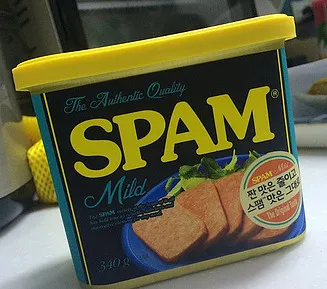What are Best Practices of Email Marketing: Avoiding the Spam Filter

Disclosure: Some of the links in this article may be affiliate links, which can provide compensation to me at no cost to you if you decide to purchase. This site is not intended to provide financial advice and is for entertainment only.
The Story Begins: My Personal Journey with Email Marketing
Once upon a time, I found myself in the same spot you might be right now. I was eager to connect with my audience, inform them about my products and services, and build lasting relationships. It all seemed pretty straightforward until I encountered the dreaded spam filter - the nemesis of all email marketers. Countless carefully crafted emails, unseen and unread. But the good news is, I've learned how to bypass this arch-nemesis successfully, and I'm here to share the secrets.
The Importance of Understanding Spam Filters
Before we dive into the best practices for avoiding spam filters, it's essential to understand what they are and why they exist. Spam filters are sophisticated programs designed to keep irrelevant or malicious emails out of users' inboxes. They are a critical tool for Internet Service Providers (ISPs) like Gmail, Yahoo, and others to protect users from unwanted content.
However, these filters are not perfect and can occasionally mistake legitimate emails (like yours and mine) for spam. This is why understanding how these filters work and adhering to best practices are critical for ensuring your emails reach your intended audience.
Tip #1: Building a High-Quality Email List
One of the first things I learned on my journey with email marketing was the importance of building a high-quality email list. It may seem tempting to purchase an email list to quickly increase your reach, but it's a sure-fire way to land in the spam folder. Instead, use opt-in forms on your website and social media pages to gather emails. Tools like GetResponse can help you design attractive and effective forms to attract potential subscribers.
Building a high-quality email list revolves around nurturing a subscriber base that is genuinely interested in your offerings and actively interacts with your emails. The initial step to developing such a list includes creating a transparent signup process on your website where visitors willingly subscribe to your emails. This foundation paves the way for a relationship built on trust. To further boost signups, offering something valuable and relevant, such as discounts, exclusive content, or early access to new offerings, can provide a compelling reason for visitors to subscribe.
As your email list expands, it's vital to segment your subscribers based on various factors like demographics, purchase history, and email engagement. This strategy allows for personalized emails leading to increased open and click-through rates. Alongside segmentation, maintaining list hygiene by removing inactive subscribers enhances email deliverability and keeps the list quality high. Finally, constant testing and optimization of signup forms can maximize conversions from visitors to subscribers. Regardless of the strategies employed, remember that building a high-quality list is an investment in fostering valuable relationships with your audience, far outweighing the benefit of simply having large numbers.
Building an email list is not just about accumulating a large number of email addresses. Instead, it's about cultivating a list of subscribers who are genuinely interested in your products or services and are likely to engage with your emails. The quality of your email list directly impacts the success of your email marketing campaigns.
Tip #2: Personalize Your Emails
Personalizing your emails goes beyond just addressing your subscriber by their name. It includes offering content that speaks directly to their needs, interests, and experiences. This means understanding your subscribers at a deeper level and segmenting them based on various factors, such as demographics, behavior, and purchase history. You can then tailor your messaging to address their specific needs or preferences, making the emails more relevant and engaging.
One way to personalize your emails is through dynamic content, which changes based on the recipient's characteristics. This allows you to send a single email, but different segments of your audience will see different content suited to them. Another method is triggering emails based on the subscriber's behavior, like abandoned cart emails or follow-ups after a purchase. You could also personalize emails based on the customer's journey stage. For example, welcome emails for new subscribers, educational content for potential buyers, and special offers for loyal customers. With these personalized approaches, your emails become more relevant, leading to improved engagement, higher click-through rates, and, ultimately, increased conversions. This is another area whereGetResponse shines, with features that allow you to segment your list and send highly targeted content.
Tip #3:
Writing Engaging Subject Lines
The subject line of your email is the first thing your subscriber sees and often determines whether your email gets opened. The subject line can make the difference between your email being opened or disregarded. It should be enticing and spark curiosity, but it also needs to be truthful and not misleading. A clickbait subject line might get you an open, but if the content doesn't deliver what's promised, you'll end up with an unhappy subscriber, which can harm your brand image and engagement rates.
Creating a sense of urgency, such as "24-hour sale" or "last chance to register," can prompt subscribers to open the email immediately, instead of leaving it for later and possibly forgetting about it. Personalization in the subject line, like including the subscriber's name or referencing a past purchase, can also increase open rates. Moreover, it's important to keep your subject lines short and to the point; most email clients cut off subject lines at around 60 characters. It can be beneficial to conduct A/B tests on your subject lines to see what resonates best with your audience. Remember, what works for one business might not work for another, so it's essential to understand your unique audience and what appeals to them. Also avoid using all caps or excessive punctuation, as these can trigger the dreaded spam filter.
Tip #4: High-Quality, Valuable Content
High-quality, valuable content is at the heart of successful email marketing. From my own experience, I found out that sending irrelevant, repetitive, or low-quality content can lead your subscribers to mark your emails as spam. The main objective should always be to offer something worthwhile to the reader. This could be in the form of insightful industry news, helpful how-to guides, exclusive discounts, or early access to new products or services. By delivering content that is beneficial and relevant to your audience, you’ll keep them engaged and looking forward to your future emails.
However, providing high-quality content doesn’t just end with the content of the email; it extends to its presentation as well. Make sure your emails are visually appealing and easy to read. This means using a clean, simple layout, eye-catching visuals, and breaking up text into smaller sections or bullet points for readability. Emails also need to be mobile-friendly since a large portion of your audience will be opening them on a mobile device. Also, don’t forget to include a clear call-to-action that directs your readers on what to do next. This could be to visit your website, take advantage of a sale, or read a blog post. Quality content combined with an attractive design and a strong call-to-action can significantly boost your email marketing success. Ask yourself, "Would I be excited to receive this email?" If the answer is no, it might be time to go back to the drawing board.
Tip #5: Use Images and HTML Wisely
In my early days, I thought a splashy, image-heavy email would grab attention. Well, it did, but not from my subscribers. Spam filters were all over it. The key here is balance. While images can make your emails more engaging, too many images or improperly coded HTML can set off spam alarms.
Optimization is key. Large, unoptimized images can slow down the email loading time and lead to a frustrating experience for your subscribers. In my experience, I've found that it's crucial to ensure images are correctly sized and compressed for email. This means they're large enough to be clear and engaging, but not so large that they slow down the load time. Also, always include alt text for images. If images don’t load or if a subscriber uses a screen reader, the alt text will ensure they understand the message you're trying to convey with the image.
On the HTML front, it’s essential to make sure your code is error-free. Coding errors can break the layout of your email, making it look unprofessional and hard to read. Therefore, it's worth taking the time to double-check your code or even have a second pair of eyes review it. Most email marketing tools, like GetResponse, offer HTML email templates that have been pre-checked for errors, which can be a big help. But even then, I recommend sending a test email to yourself and opening it in different email clients and devices to ensure it looks and works as intended. Clean, error-free HTML can make the difference between a professional-looking email and one that ends up in the trash.
Tip #6: Be Mindful of Frequency
How often should you send emails? It's a question that even I, as an experienced email marketer, still grapple with. Too many emails, and you risk annoying your subscribers and ending up in the spam folder. Too few, and your subscribers might forget about you. The answer can vary depending on your audience and the nature of your emails. As a rule of thumb, one to two emails per week is a generally accepted frequency for most businesses and email marketing platforms like GetResponse can help you setup automating this process!
Tip #7: Personalization is Key
One of the lessons I've learned over time is that personalization can go a long way in increasing engagement and open rates. The days of "Dear Customer" emails are long gone. Today's audience values businesses that take the time to understand them and deliver personalized content. When I started personalizing emails, whether it was as simple as using the recipient's first name or as complex as tailoring content based on their past purchases or behaviors, I observed a significant increase in engagement rates. Personalization isn’t just about addressing the recipient by name, it’s about making them feel seen and understood. It gives a human touch to your digital communication.
When it comes to more complex personalization, marketing automation tools like GetResponse have been incredibly beneficial. For instance, segmenting my email list based on customer behavior or interests and sending out content specific to each segment has led to a higher open rate and click-through rate. This is because recipients tend to engage more with emails that are relevant to them. Personalization, when done right, can make your customers feel valued, leading to stronger relationships and, ultimately, higher conversions. But remember, it's important to maintain a balance. Over-personalization can seem intrusive and may turn off your subscribers. Aim to make your emails more relevant and engaging without crossing the boundary into being overly personal or creepy.
Tip #8: Mobile Optimization
I remember the time I sent out an awesome newsletter, only to realize it looked like a jumbled mess on mobile devices? Yep, big mistake. Today, more than half of emails are opened on mobile devices, so it's essential to ensure your emails look great and function perfectly on all screen sizes. Most email marketing platforms, like GetResponse, provide mobile-friendly templates to make this process easier.
Tip #9: Test and Improve
Finally, I've found that the key to avoiding the spam filter and running a successful email marketing campaign lies in continuous testing and improvement. Test different subject lines, content types, sending times, and personalization techniques to see what works best for your audience. Most importantly, pay attention to your metrics - open rates, click-through rates, conversion rates, and, yes, spam complaints. These will guide your strategy and help you improve over time.
So there you have it, some valuable lessons from my own journey with email marketing. From the importance of a clean list to the power of personalization and mobile optimization, these best practices will help you avoid the spam filter and achieve better results from your email campaigns. Remember, email marketing is about providing value and building relationships, not just selling. Make your subscribers look forward to your emails, and you'll be well on your way to email marketing success. Happy emailing!
Disclosure: Some of the links in this article may be affiliate links, which can provide compensation to me at no cost to you if you decide to purchase. This site is not intended to provide financial advice and is for entertainment only.





